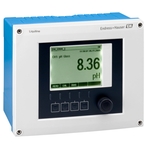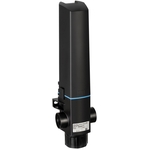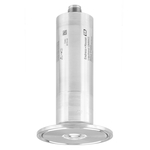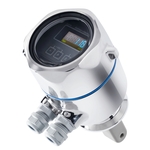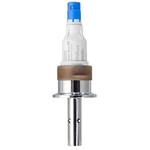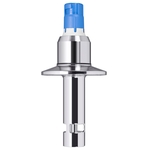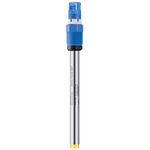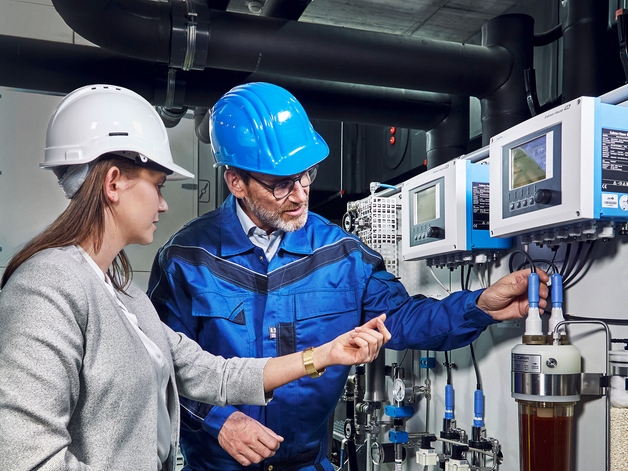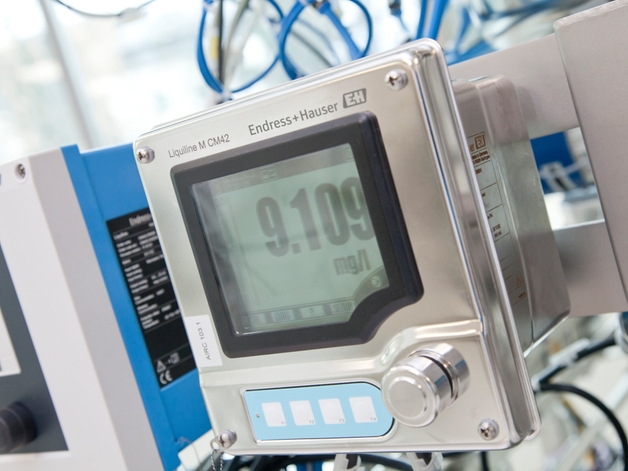Czujniki i przetworniki przewodności
W wielu instalacjach pomiar przewodności ma kluczowe znaczenie w układach sterowania procesem, monitorowania przepływu wody i produktu oraz wykrywaniu wycieków. Dostarczamy niezawodne i precyzyjne przyrządy dla wszystkich warunków i zakresów pomiarowych, np. do pomiarów w ultraczystej wodzie, cyklach CIP, obszarach niebezpiecznych lub procesach higienicznych. Zapoznaj się z naszą bogatą ofertą konduktometrycznych i indukcyjnych czujników i przetworników przewodności oraz innych pomocnych narzędzi kalibracyjnych. W tym celu kliknij poniższy przycisk.
Jak dobrać czujniki przewodności?
Czujniki i przetworniki przewodności są stosowane w wielu gałęziach przemysłu, np. w przemyśle spożywczym, przemyśle chemicznym, naukach przyrodniczych, przemyśle farmaceutycznym, instalacjach wodnych i elektrowniach. Dobór czujnika zależy od zastosowania oraz zakresu przewodności. Do pomiaru niskich przewodności w czystej i ultraczystej wodzie należy stosować czujniki konduktometryczne. Czujniki indukcyjne należy stosować w mediach o wysokiej przewodności (np. mleku, piwie, zasadach, kwasach, solance), natomiast czujniki 4-elektrodowe — w sytuacjach, gdy wymagany jest szeroki zakres pomiarowy (np. w układach z separacją faz).
Pomiar przewodności czujnikami przewodności
Sondy konduktometryczne są wyposażone w dwie elektrody rozmieszczone na przeciwko siebie. Do elektrod przykładane jest napięcie zmienne. W ten sposób wywoływany jest przepływ prądu w medium. Natężenie prądu zależy od liczby swobodnych anionów i kationów w medium, które przemieszcza się między elektrodami. Im więcej anionów i kationów zawiera ciecz, tym większe są przewodność elektryczna i przepływ prądu. Jednostką przewodności jest Siemens na metr.
Pomiar przewodności 4-elektrodowymi czujnikami
Wysokie stężenie jonów w medium prowadzi wzajemnego ich odpychania się, a tym samym do redukcji natężenia prądu — jest to tzw. zjawisko polaryzacji. Może ono wpływać na dokładność pomiarową sond konduktometrycznych. 4-elektrodowe czujniki posiadają dwie elektrody bezprądowe, na które nie ma wpływu zjawisko polaryzacji. Mierzą one różnicę potencjałów w medium. Podłączony przetwornik wykorzystuje zmierzoną różnicę potencjałów oraz natężenie prądu do obliczenia wartości przewodności.
Pomiar przewodności pierścieniowymi / indukcyjnymi czujnikami
Sondy indukcyjne składające się z cewki transmisyjnej i odbiorczej mierzą przewodność w kilku etapach:
- Oscylator generuje zmienne pole magnetyczne w cewce transmisyjnej, wytwarzając napięcie w medium.
- Kationy i aniony w medium zaczynają przepływać, wytwarzając prąd przemienny.
- W ten sposób indukowane jest zmienne pole magnetyczne oraz przepływ prądu do cewki odbiorczej.
Natężenie prądu oraz przewodność rosną wraz ze wzrostem liczby swobodnych jonów w medium.
Korzyści
- Oferujemy przydatne rozwiązania w zakresie wzorcowania przewodności, a także wzorce przewodności zapewniające wysoką precyzję pomiarów.
- Stała celki czujników konduktometrycznych jest mierzona fabrycznie i potwierdzana certyfikatem.
- Nasza oferta czujników i przetworników przewodności obejmuje wszystkie zakresy pomiarowe przewodności oraz wszystkie powszechnie stosowane przyłącza procesowe.
- Kompaktowe urządzenia zawierające czujnik i przetwornik przewodności doskonale nadają się do stosowania w przemyśle spożywczym.


